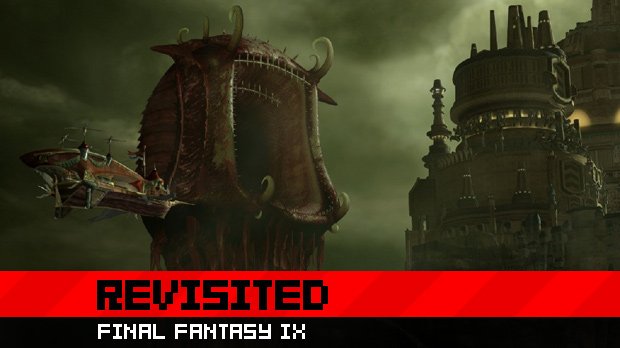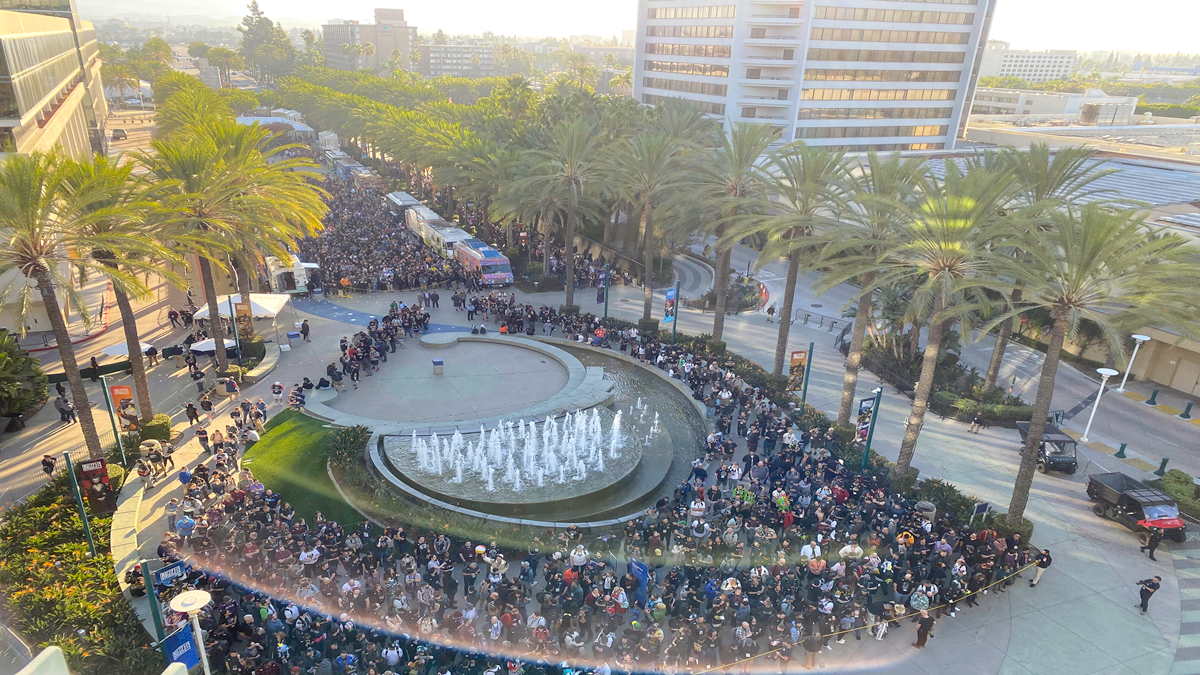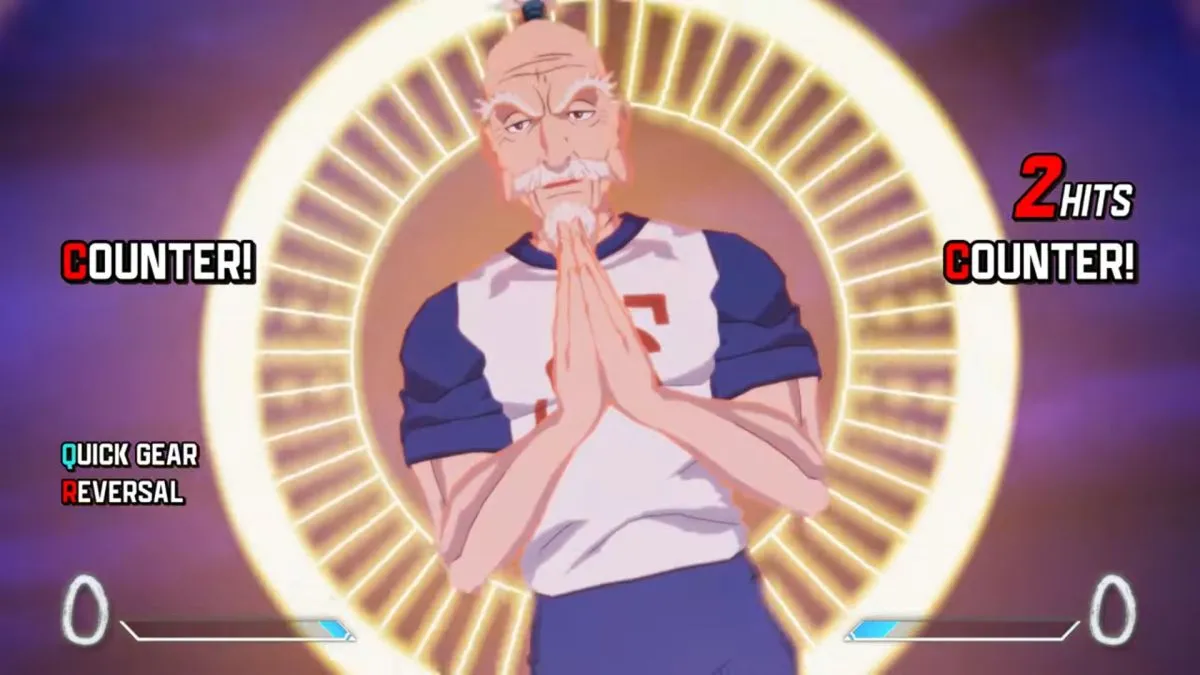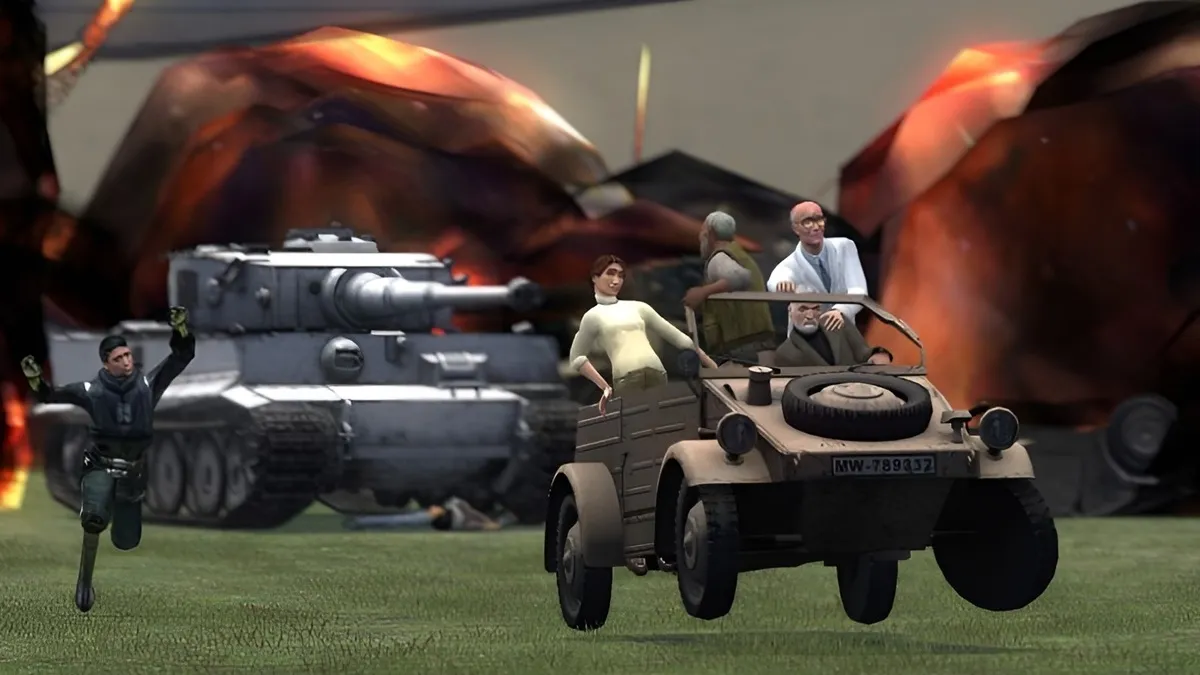[Editor’s Note: We’re not just a (rad) news site — we also publish opinions/editorials from our community & employees like this one, though be aware that it may not jive with the opinions of Destructoid as a whole, or how our moms raised us. Want to post your own article in response? Publish it now on our community blogs.]
As the notion of ludo-narrative dissonance—that a game’s “play” elements pull against its narrative ones—becomes the dominant shibboleth of an increasingly large tribe of games critics, the Japanese-style role playing game seems to have been pigeonholed as stagnant and archaic. It’s not that the genre is dissonant, per se; it’s that its ludic and narrative elements seem to be so fully divorced from one another that analysis seems like a waste of time.
And yet Final Fantasy IX remains, in my mind, the most thematically cohesive of the series and a triumph of narrative focus. It is, to coin a phrase, ludo-narratively resonant: Final Fantasy IX’s mechanics don’t reveal the game’s narrative as much as they contribute to and inform a particular understanding of it. Final Fantasy IX is an exploration of how the creation and maintenance of identity is intrinsically linked to material objects.

Active Time Battle, Materia, Draw and Junction, Sphere Grid, Gambit—Final Fantasy’s ludic components are perhaps as well known as its narratives. Final Fantasy IX, however, ostensibly lacks any distinctive mechanics, opting for a relatively old school, and relatively simple, weapons-based system of abilities and skill points: Zidane, the game’s protagonist, and his crew gain new skills by equipping new weapons. For example the Mage Masher, a dagger Zidane finds early in the game, enables him to learn the abilities Flee and Detect, provided he use it long enough to acquire the requisite Ability Points—a fairly ho-hum system, given Final Fantasy’s long tradition of innovation in a genre noted for being old-fashioned.
A perfunctory sketch of Final Fantasy IX’s characters reveals the extent to which the game seems fixated on the friction between outer appearances and inner truths. Zidane and Kuja struggle with their origins as living weaponry, manipulated by Garland; Dagger (née Garnet) is an adopted Alexandrian princess who learns that she and Eiko, another orphaned girl, belong to an ancient and all-but-extinct race of summoners; Steiner, Dagger’s bodyguard, and Freya, a Burmecian dragoon, balance their loyalties to their respective states with their devotion to individual members of those states; and so on and so forth.
Of particular interest is Vivi, a black mage (and yet another orphan). The subject of the most poignant sub-plot in the game, Vivi joins Zidane in an attempt to learn more about his origins. Vivi’s species of black mages were artificially created to be foot soldiers, chattel to be bought and sold in Kuja’s blossoming black market arms dealership. This irony singularly dominates the climax of the game: players and characters alike learn that Kuja was himself created by Garland to wipe out the population of Gaia, so that the inhabitants of Terra, a neighboring, destitute planet, might move in. Zidane is created, in turn, to kill Kuja, thereby wrapping up all of Garland’s loose ends. These character’s self-awareness ultimately disrupt Garland’s plan, but the Terrans do find new homes in the Black Mage Village, a refuge for Vivi’s sentient kinsmen.

And so, Final Fantasy IX’s exploration of identity is macrocosmic—entire planets are forced to tackle the issue—yet the game is, in general, lighthearted. Take, for example, Quina Quen, a bipedal creature of indeterminate origin whose primary motivations are always gustatory. Quina’s broken English serves as comic relief, but his ambiguous sex (Quina is always referred to as “s/he”) reminds players of the game’s more grandiose concerns.
In the world of Final Fantasy IX, then, there exists a peculiar narrative tension between outer expectations—social or political class, perceived nationality or race—and inward desires and innate characteristics. On a very basic level, this binary extends to the game’s ludic systems: each weapon’s inherent nature (the abilities it confers) is only presented outward (when those abilities are conferred onto the character) after certain requirements are met. In a sense, then, even the weapons of Final Fantasy IX have identities while simultaneously defining each character, both ludically and narratively.
This certainly isn’t a new concept: Agamemnon has his golden armor; Beowulf carries Hrunting; Roland brandishes Durandal; Spenser’s Red Crosse Knight carries a shield emblazoned with St. George’s Cross; Aragorn’s claim to the Númenorian throne is his re-forged Narsil. On the one hand, the weapons in Final Fantasy IX can be said to have identities of their own; on the other, a character’s choice of weapon defines and is defined by his narrative and ludic role. A social and symbolic economy based on this concept of weaponry is perhaps a trope of epic and fantasy literature, but it’s gracefully integrated and provides an axis on which to think of the game.

While thinking of Kuja as a sentient weapon is technically accurate, it’s abstract and reductionist—it understates the complexity of his character, and it lacks any ludic component. More relevant might be the mustachioed thunder god Ramuh, an Eidolon (known in other Final Fantasy games as a summon). Even though Ramuh is an Eidolon and introduces himself as such, he’s been keeping tabs on Gaia’s escalating political climate and is keen to enter the fray. Eager to join Dagger, Ramuh tests the group; after they pass, he joins them, manifesting as a peridot, a light green semi-precious stone that can be equipped to each character as a special accessory. Even though Ramuh is, essentially, a tool of war, he is actively engaged in his own participation. Ramuh particularly personifies the idea that, in the world of Final Fantasy IX, weapons have identities of their own. This idea applies to every weapon or piece of armor in the game, though often in a more simplified form.
Dagger’s encounter with Ramuh is also interesting because it illustrates the extent to which the weapons in Final Fantasy IX define their users identities as well. After Dagger’s mother, Queen Brahne, contracts Kuja and his black mage soldiers to attack neighboring city-state Burmecia, the party returns to Alexandria to confront her. There, Dagger is imprisoned and Kuja “extracts” her Eidolons from her, allowing Brahne to summon them, even though she isn’t a member of the traditional summoner race. The process is incredibly painful and renders Dagger mute: she does not speak and refuses to do battle until she meets Ramuh at the Pinnacle Rocks. Ramuh’s decision to confer his abilities unto Dagger restores her speech, and her ability to fight. Thus, we see the extent to which Dagger’s identity is tied to her access to weaponry (in this case, the precious and semi-precious stones that allow her to summon Eidolons): she is empty, ludically and narratively, without them and restored when they return.
Another example is Alexander, an angel-winged Eidolon designed to protect Alexandria Castle: Alexander is the castle’s trademark, but is bound by the castle’s layout. Alexander’s shape is defined by that of the castle; the castle is defined by its association with Alexander. The city’s architecture and the creature designed to protect it are inextricable—one is part of the other.
A throwback to an older approach to ludic character development, Final Fantasy IX offers a relatively narrow set of skills for each player. The right combination of Materia could turn Final Fantasy VII’s Cloud into a healer, a black mage, or a warrior, for example. In contrast, IX’s Zidane can only be a thief; Steiner only a knight. It seems clear now that, in the world of Final Fantasy IX, weapons have a mutually supportive and synecdochic relationship to their owners. Yet Steiner struggles, as do the other characters, with his prescribed role—what does it mean to be a knight, a princess, or a black mage engineered as a foot soldier in Kuja’s black-market mercenary army?
This concept of identity raises the question: does Steiner use a sword because he’s a knight, or is he a knight because he uses a sword? The answer is both. Character identity is consistent both in and out of battle, and this identity is defined, in part, by each character’s arsenal. Weapons serve a heraldic function here: a sword represents a knight; the lance belongs to the dragoon; a dagger for a thief; fighting claws for the monk class; and so forth, ludic signifiers built on a series of cultural referents from the rest of the Final Fantasy series. Additionally, the game’s fantasy setting largely erases any demarcation between the ludic and the narrative: you play as a mage and a knight in a world in which mage and knight have real social implications.
Given this understanding of the thematic implications of weapon-as-identity and identity-as-weapon, players begin to realize Kuja’s real source of power. As a black market arms dealer, Kuja is, essentially, a political player. His strengths lie in the manipulation and artificial de-construction of identity. He goads a normally peaceful Queen Brahne into attacking her neighboring city-states by selling her an army of black mages; he instigates and encourages Garnet’s extraction, discussed above; he artificially induces “Trance”—the Final Fantasy IX equivalent of a Limit Break or Overdrive, triggered by emotional duress—on himself. Conversely, Final Fantasy IX is ultimately self-affirmative: real success, here represented as having the best weapons and skills and by defeating an antognist marked by his ability to undermine internal truths, is the ability to construct and maintain one’s own identity in a shifting and dangerous world.

With this concept in mind, consider Memoria, a Twilight Zone-esque dungeon created out of memories. Memoria might seem like a terra ex machina, a nonsensical area arbitrarily designated to be the game’s last dungeon. (Dismissing Memoria as artificial doesn’t lack merit—it appears on the map as a glowing ball of energy floating in the sky.) And yet, it’s a logical conclusion to Final Fantasy IX’s thematic thrust: the best weapons have been attained, all the questions about characters’ history and identity answered. Memoria is a place where past and future, reality and illusion, memory and perception blend together seamlessly. As players traverse Memoria, scenes from their pasts play out in front of them, an integral part of the landscape. Memoria is perhaps the physical manifestation of all the doubt, fear, and insecurity that comes with affirming oneself in a hostile environment, the perfect cap to a game singularly focused on that issue; as I mentioned before, the ending is a triumphant one.
Final Fantasy IX is remarkably cohesive and exhibits a ludonarrative focus often absent in most games. It’s a poignant and lighthearted exploration of identity and humanity; it simultaneously captures the zeitgeist of turn-of-the-century Squaresoft. Oft-cited as the last “traditional” Final Fantasy game—the last game on the PlayStation, and the last before Squaresoft merged with Enix—Final Fantasy IX is the culmination of a decade of hard work, a living history of the brand. It is fitting that, just as the characters of Final Fantasy IX are partly defined by physical objects, Squaresoft chose to define itself by a game—bytes on a disc, after all—that so seamlessly integrates and incorporates the disparate parts of the Final Fantasy series.
Ultimately, I think Final Fantasy IX makes demands of its players—that they take stock of which tools they use and to what ends. Final Fantasy IX is a triumph—technologically, narratively, and ludically.
[Full disclosure: I made a pretty hefty chronological mistake when discussing Dagger going mute; I left it as it was. I made a relatively smaller mistake, calling Alexander “Ark.” I fixed that post-publication.]




